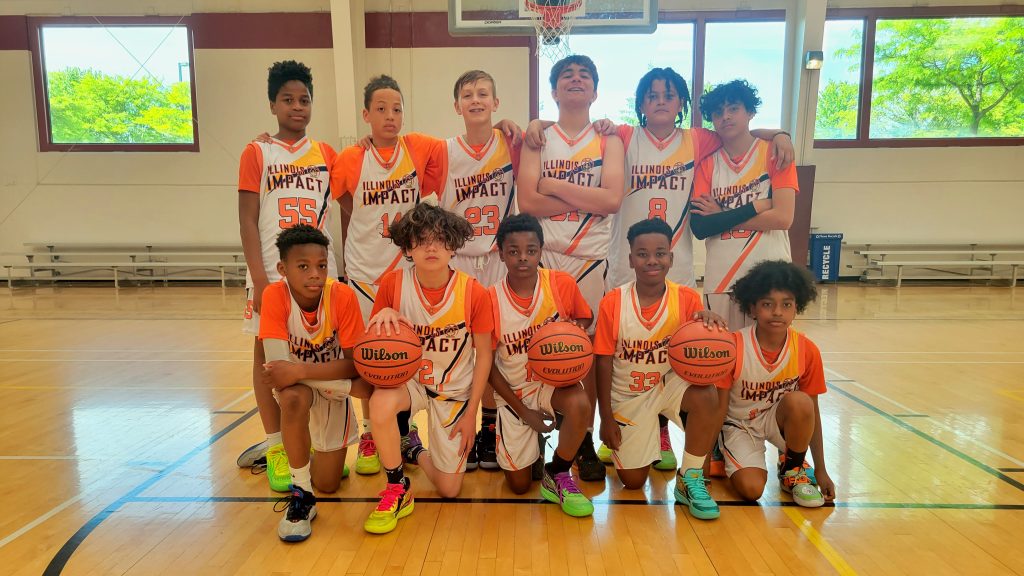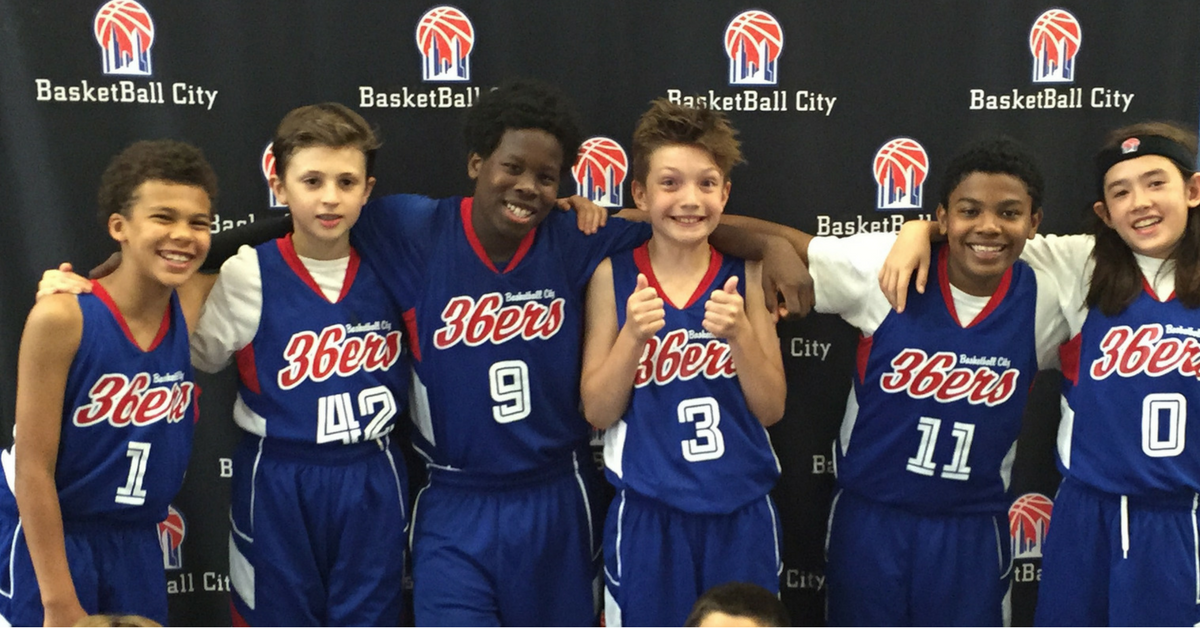Introduction to AAU Basketball
What is AAU Basketball?
AAU Basketball refers to the basketball programs organized by the Amateur Athletic Union (AAU), a non-profit organization dedicated to fostering amateur sports. The AAU offers competitive basketball opportunities for youth athletes, ranging from elementary school through high school. AAU Basketball is known for its high level of competition and serves as a platform for players to showcase their skills and gain exposure.

History of AAU Basketball
Founded in 1888, the Amateur Athletic Union (AAU) has a long history of promoting amateur sports in the United States. AAU Basketball began gaining prominence in the mid-20th century as the organization expanded its focus to include youth and amateur basketball.
Over the decades, AAU Basketball has become a key part of the youth sports landscape, with a significant impact on player development and recruitment. Its national tournaments and leagues have grown in scale and importance, making Basketball a major player in the sport.
Structure of AAU Basketball
AAU Basketball is structured to cater to various age groups and skill levels:
- Age Groups: Teams are organized by age brackets, typically starting from 8U (under 8 years old) and going up to 17U (under 17 years old). This ensures that players compete against others of similar age and development levels.
- Divisions: Within each age group, teams may be divided into different divisions based on skill level, such as “Elite” or “Open” divisions. This helps maintain competitive balance and allows players to compete at an appropriate level for their abilities.
- Tournaments and Leagues: AAU Basketball features a range of local, regional, and national tournaments and leagues. These events offer players the chance to compete against teams from different regions and gain exposure to college scouts and recruiters.
- Club Teams: AAU teams are typically organized by clubs or organizations that focus on developing players and participating in AAU-sanctioned events. These clubs often operate year-round, providing consistent training and competition.
Benefits of Playing AAU Basketball
1. Skill Development
- Advanced Training: AAU Basketball provides access to experienced coaches and specialized training programs, helping players refine their skills and improve their overall game.
- Practice and Play: Players engage in frequent practice sessions and competitive games, which accelerates skill development and basketball IQ.
2. Exposure to College Coaches
- Showcase Opportunities: AAU tournaments and leagues attract college scouts and recruiters, offering players a platform to demonstrate their abilities in front of potential future coaches.
- Recruitment Pathway: Performing well in AAU competitions can lead to scholarship offers and recruitment opportunities for collegiate basketball programs.
3. Competition Level
- High-Level Play: AAU Basketball features strong competition with teams from various regions, helping players test their skills against high-caliber opponents.
- Development Through Challenge: Competing at a high level helps players adapt, grow, and enhance their game under pressure.
4. Character Building
- Teamwork and Leadership: Playing in AAU Basketball fosters qualities such as teamwork, leadership, and discipline, as players work closely with teammates and coaches.
- Resilience and Work Ethic: The competitive nature of AAU helps build resilience, a strong work ethic, and the ability to overcome challenges both on and off the court.
5. Networking Opportunities
- Connections with Peers: AAU Basketball provides opportunities to connect with other talented players, coaches, and basketball professionals, building a network within the basketball community.
- Exposure to Different Styles: Interacting with players and coaches from diverse backgrounds and regions helps broaden players’ understanding of different playing styles and approaches to the game.

Challenges of AAU Basketball
1. Time Commitment
- Intensive Schedule: AAU Basketball often involves a demanding schedule with frequent practices, games, and tournaments, which can be time-consuming for players and their families.
- Impact on Personal Time: The rigorous schedule can limit time for other activities, including family time, hobbies, and rest.
2. Financial Costs
- Expense of Participation: Playing AAU Basketball can be costly, with expenses including registration fees, uniform costs, travel, and tournament fees.
- Additional Costs: Families may also incur additional expenses for travel, accommodations, and meals during out-of-town tournaments.
3. Travel Demands
- Frequent Travel: AAU teams often travel extensively for games and tournaments, which can be challenging and require significant logistical planning.
- Impact on Daily Life: The travel demands can disrupt daily routines and affect school attendance, family time, and overall life balance.
4. Academic Balance
Balancing Academics and Sports: The commitment to AAU Basketball can make it challenging for players to maintain academic performance and meet school responsibilities.
- Potential for Neglect: The focus on sports might lead to neglecting academic priorities, which can impact long-term educational and career opportunities.
5. Potential for Overspecialization
- Risk of Burnout: Intense focus on basketball through AAU programs can lead to burnout or decreased interest in the sport.
- Limited Exposure to Other Sports: Players may miss opportunities to explore other sports or activities, potentially limiting their overall development and interests.

The Role of Parents in AAU Basketball
1. Supporting Your Child
- Encouragement and Motivation: Parents play a crucial role in providing emotional support and encouragement, helping their children stay motivated and confident throughout their AAU Basketball journey.
- Attendance and Involvement: Attending games and practices, and being involved in their child’s basketball activities, helps reinforce their commitment and shows support.
2. Setting Expectations
- Realistic Goals: Parents should set realistic and achievable goals for their child, focusing on personal growth and enjoyment rather than just competition and accolades.
- Open Communication: Establishing clear and open communication with their child about expectations and goals helps align both parties and reduces pressure.
3. Balancing Academics and Athletics
- Prioritizing Education: Parents should encourage their children to maintain a balance between academics and athletics, ensuring that schoolwork and educational goals are not neglected.
- Time Management: Helping their child develop effective time management skills can aid in balancing practice, games, schoolwork, and other responsibilities.
4. Managing Costs
- Budget Planning: Parents need to plan and budget for the financial aspects of AAU Basketball, including registration fees, travel expenses, and equipment costs.
- Seeking Support: Exploring scholarships, fundraising opportunities, or team sponsorships can help alleviate some of the financial burdens associated with participation.
Quick Q&A:AAU Basketball
Q: What is AAU Basketball?
A: AAU Basketball is a competitive youth basketball program organized by the Amateur Athletic Union (AAU), providing opportunities for players to develop their skills and gain exposure through structured leagues and tournaments.
Q: What are the main benefits of playing AAU Basketball?
A: Benefits include advanced skill development, exposure to college coaches, high-level competition, character building, and valuable networking opportunities.
Q: What challenges might players face in AAU Basketball?
A: Challenges include time commitment, financial costs, travel demands, balancing academics with athletics, and the potential for overspecialization.
Q: How can parents support their child in AAU Basketball?
A: Parents can support their child by offering encouragement, setting realistic expectations, balancing academics and athletics, and managing the financial costs associated with participation.
Q: What is the structure of AAU Basketball?
A: AAU Basketball is organized by age groups and skill levels, with teams competing in local, regional, and national tournaments. Players are grouped based on their age and skill, and teams are usually part of larger basketball clubs.
Conclusion
AAU Basketball offers significant opportunities for skill development, exposure to college coaches, and competitive play, but it also comes with challenges such as time commitment, financial costs, and balancing academics.
Parents play a crucial role in this ecosystem by providing support, setting realistic expectations, managing costs, and helping their child balance their academic and athletic pursuits. Understanding these dynamics can help families navigate the complexities of AAU Basketball and make the most of the benefits it offers, ensuring a positive and rewarding experience for young athletes.

